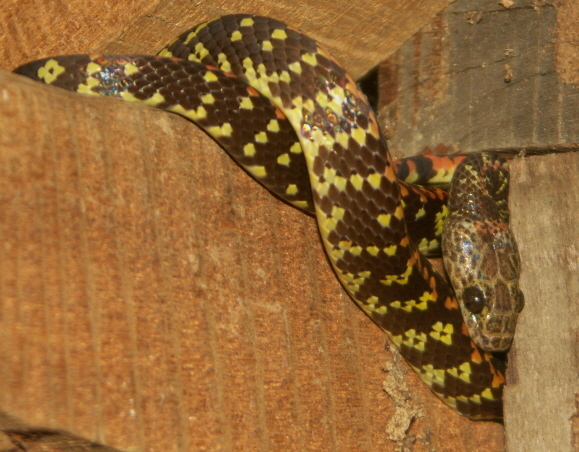
|
| Siphlophis cervinus |
This brightly marked snake was discovered in the rafters of a building near the river.
It is a rare nocturnal, arboreal snake usually found near water. It does not have a common name (that we know).
Siphlophis cervinus is the scientific name. It is probably mildly poisonous. It eats frogs and lizards--we
have plenty of those.
*
*
*
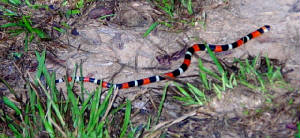
|
| Coral snake mimic |
This small snake mimics a coral snake. There are many coral snakes in South America and probably even
more snakes that look like them. Coral snakes are very poisonous and their bright colors warn away other animals.
We think that this one is called Erthrolampus aesculapii.
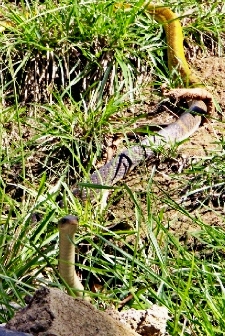
|
| Yellow-tailed cribo |
This very large snake is terrestrial and goes into holes to catch rodents. It probably also find
lots of lizards around our buildings. We see it often as it is diurnal, it hunts during the day. It is a
constrictor, killing its prey be squeezing. It is a yellow-tailed cribo, Drymarchon corais corais. We have
also seen them deep in the forest. It is a very friendly looking snake. It looks a lot like the indigo snake of
North America.
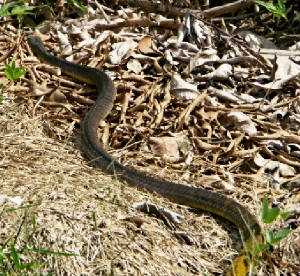
|
| Drymarchon corais corais |
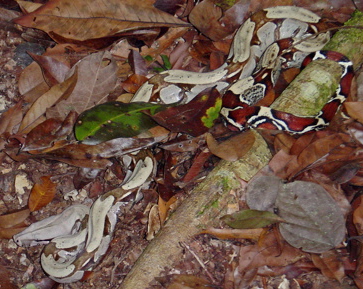
|
| photo by SueEllen Lawton |
Red-tailed boa with perfect camouflage for the leaf littered forest floor.
*
*
*
*
*
*
*
*
We believe that this is a parrot snake, Leptophis ahetulla occidentalis. Parrot snakes are
very brightly colored inside their mouths.
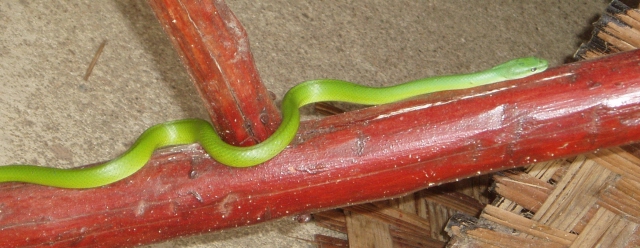
|
| Parrot snake, (Leptophis ahetulla occidentalis?) |
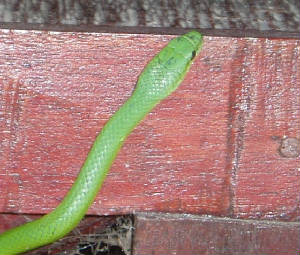
|
| Close-up of parrot snake head |
Two very beautiful green tree snakes: a vine snake below (and at the very top of this page), a parrot
snake above and to the right.
*
*
*
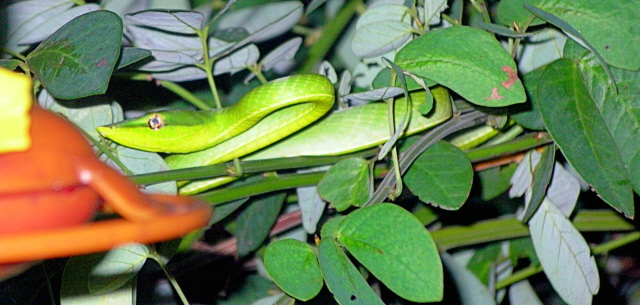
|
| Vine snake Oxybelis fulgidus |
This vine snake , Oxybelis fulgidus, waited very patiently by a hummingbird feeder.
It actually caught a hummingbird but someone came by and scared it and the bird flew away. The snake came back for many
days and waited patiently for another chance, until we finally trimmed the bushes back.
Special thanks to Roger Myers and Jairo Maldonado for help with snake identification.
In the middle of the Central Suriname Nature Reserve, Amazonia, South America
|

